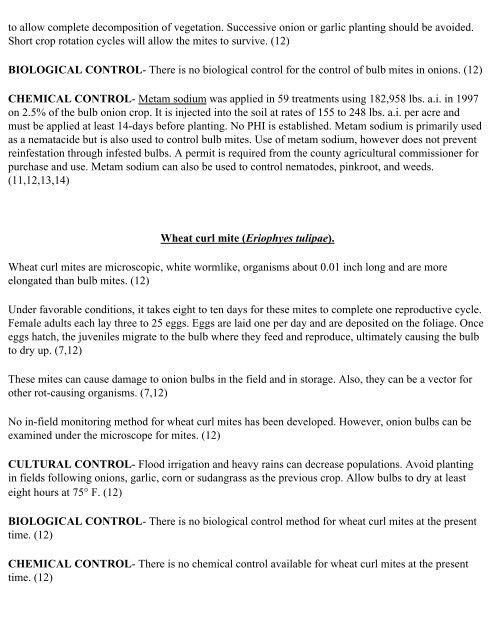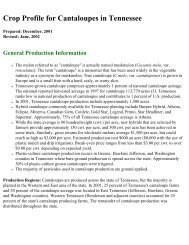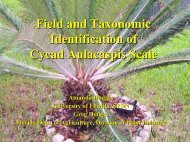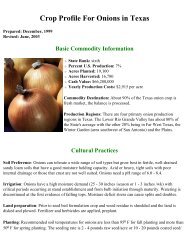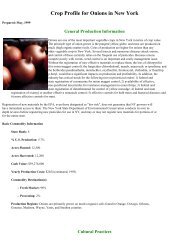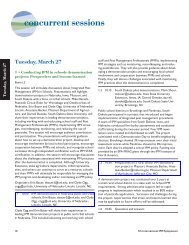Crop Profile for Onions in California - Regional IPM Centers
Crop Profile for Onions in California - Regional IPM Centers
Crop Profile for Onions in California - Regional IPM Centers
You also want an ePaper? Increase the reach of your titles
YUMPU automatically turns print PDFs into web optimized ePapers that Google loves.
to allow complete decomposition of vegetation. Successive onion or garlic plant<strong>in</strong>g should be avoided.<br />
Short crop rotation cycles will allow the mites to survive. (12)<br />
BIOLOGICAL CONTROL- There is no biological control <strong>for</strong> the control of bulb mites <strong>in</strong> onions. (12)<br />
CHEMICAL CONTROL- Metam sodium was applied <strong>in</strong> 59 treatments us<strong>in</strong>g 182,958 lbs. a.i. <strong>in</strong> 1997<br />
on 2.5% of the bulb onion crop. It is <strong>in</strong>jected <strong>in</strong>to the soil at rates of 155 to 248 lbs. a.i. per acre and<br />
must be applied at least 14-days be<strong>for</strong>e plant<strong>in</strong>g. No PHI is established. Metam sodium is primarily used<br />
as a nematacide but is also used to control bulb mites. Use of metam sodium, however does not prevent<br />
re<strong>in</strong>festation through <strong>in</strong>fested bulbs. A permit is required from the county agricultural commissioner <strong>for</strong><br />
purchase and use. Metam sodium can also be used to control nematodes, p<strong>in</strong>kroot, and weeds.<br />
(11,12,13,14)<br />
Wheat curl mite (Eriophyes tulipae).<br />
Wheat curl mites are microscopic, white wormlike, organisms about 0.01 <strong>in</strong>ch long and are more<br />
elongated than bulb mites. (12)<br />
Under favorable conditions, it takes eight to ten days <strong>for</strong> these mites to complete one reproductive cycle.<br />
Female adults each lay three to 25 eggs. Eggs are laid one per day and are deposited on the foliage. Once<br />
eggs hatch, the juveniles migrate to the bulb where they feed and reproduce, ultimately caus<strong>in</strong>g the bulb<br />
to dry up. (7,12)<br />
These mites can cause damage to onion bulbs <strong>in</strong> the field and <strong>in</strong> storage. Also, they can be a vector <strong>for</strong><br />
other rot-caus<strong>in</strong>g organisms. (7,12)<br />
No <strong>in</strong>-field monitor<strong>in</strong>g method <strong>for</strong> wheat curl mites has been developed. However, onion bulbs can be<br />
exam<strong>in</strong>ed under the microscope <strong>for</strong> mites. (12)<br />
CULTURAL CONTROL- Flood irrigation and heavy ra<strong>in</strong>s can decrease populations. Avoid plant<strong>in</strong>g<br />
<strong>in</strong> fields follow<strong>in</strong>g onions, garlic, corn or sudangrass as the previous crop. Allow bulbs to dry at least<br />
eight hours at 75° F. (12)<br />
BIOLOGICAL CONTROL- There is no biological control method <strong>for</strong> wheat curl mites at the present<br />
time. (12)<br />
CHEMICAL CONTROL- There is no chemical control available <strong>for</strong> wheat curl mites at the present<br />
time. (12)


